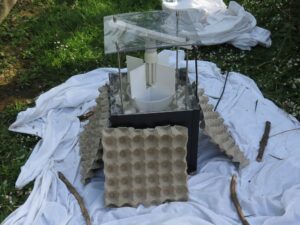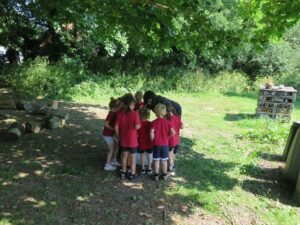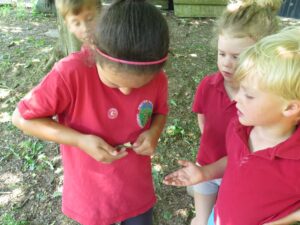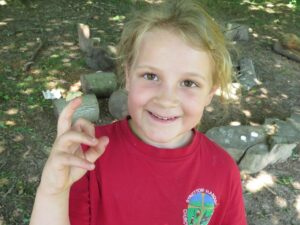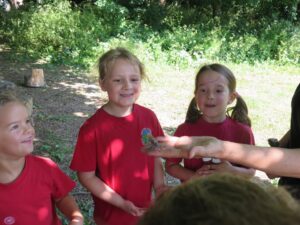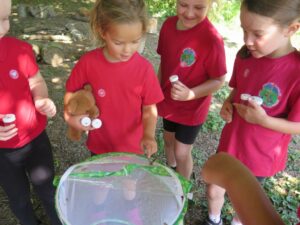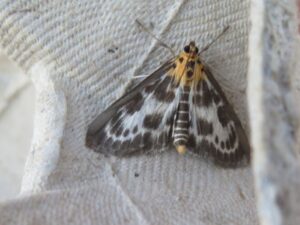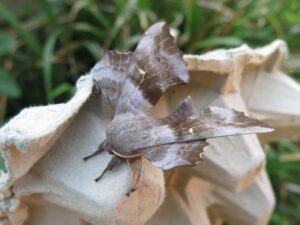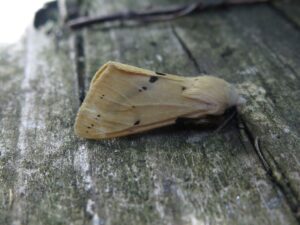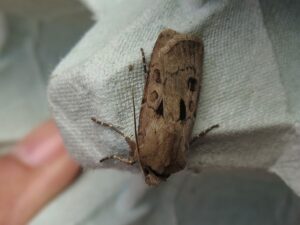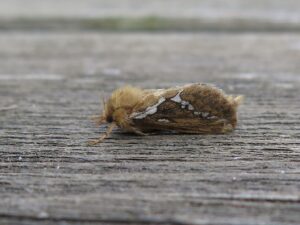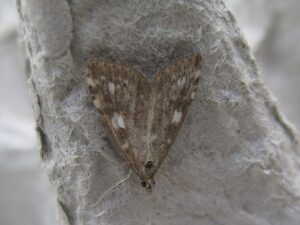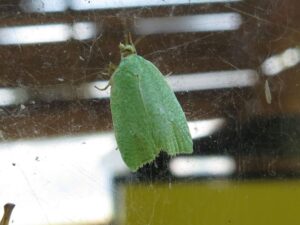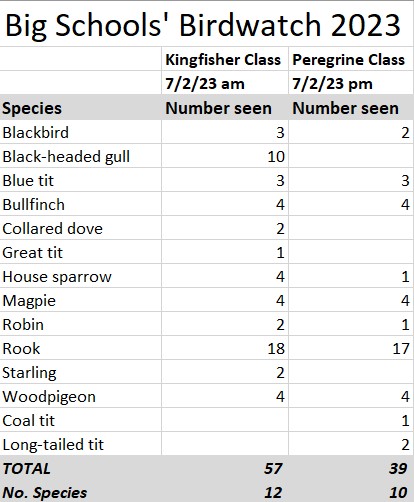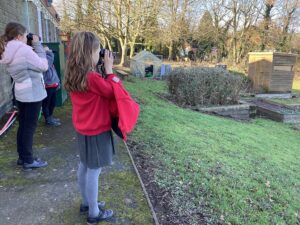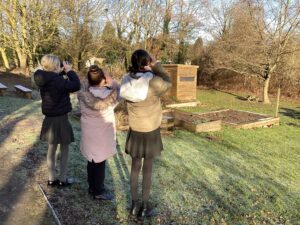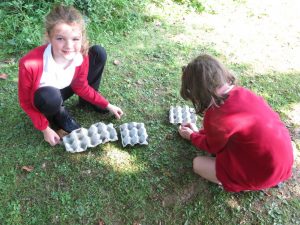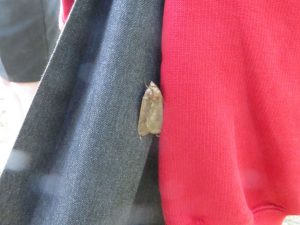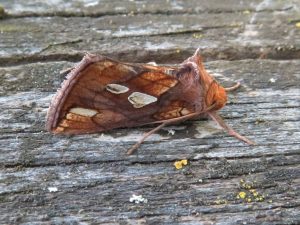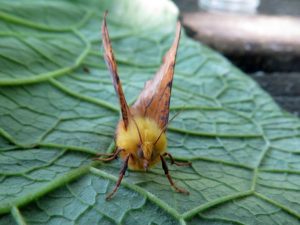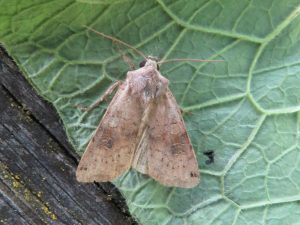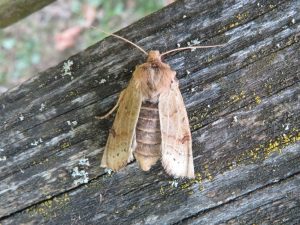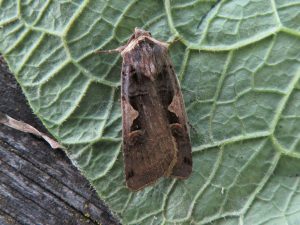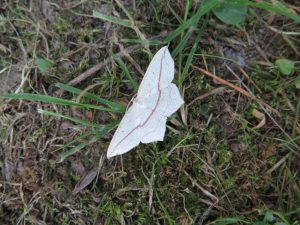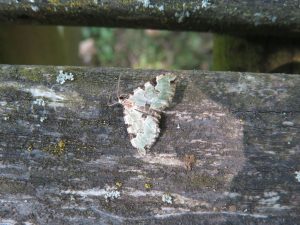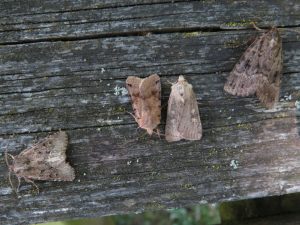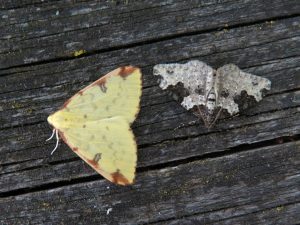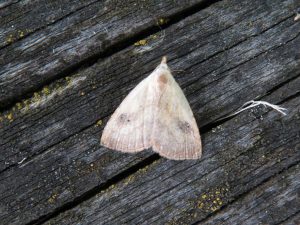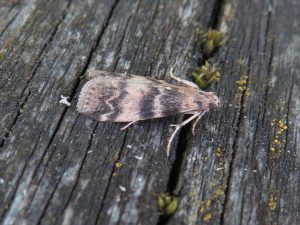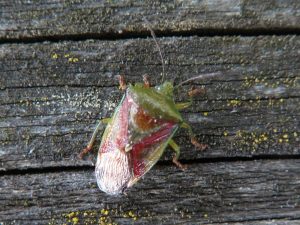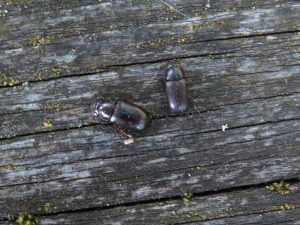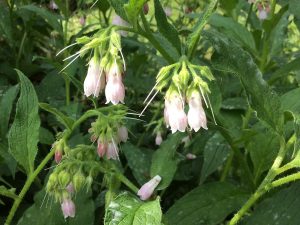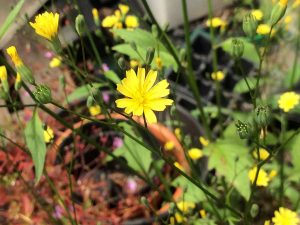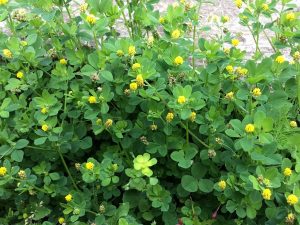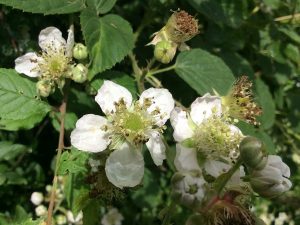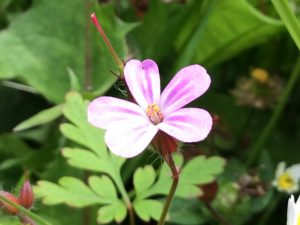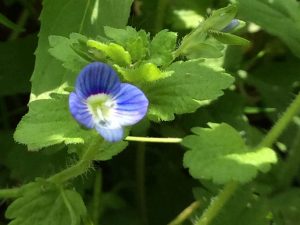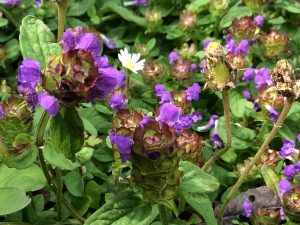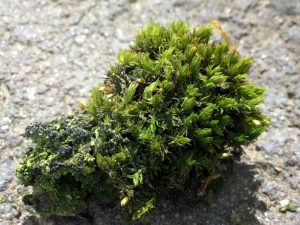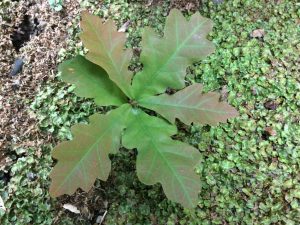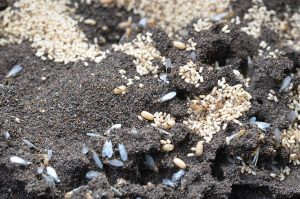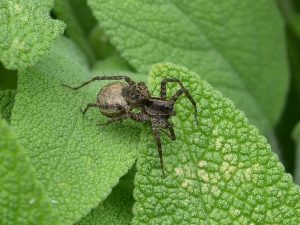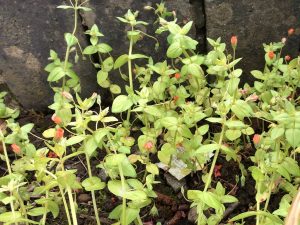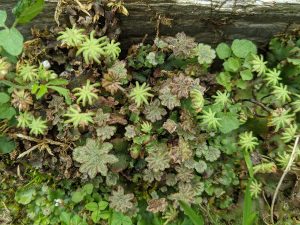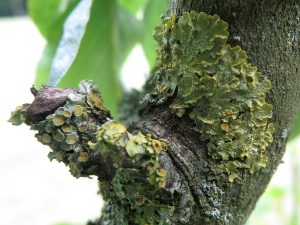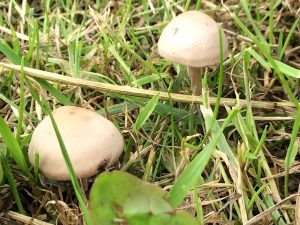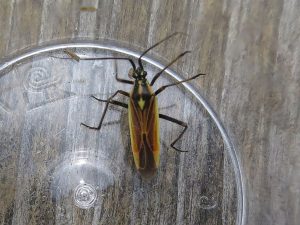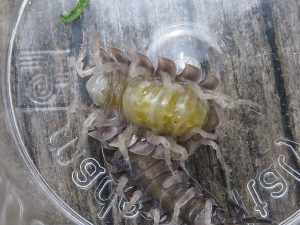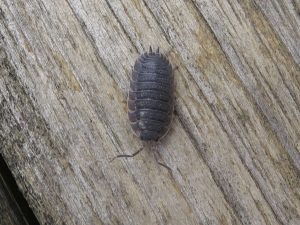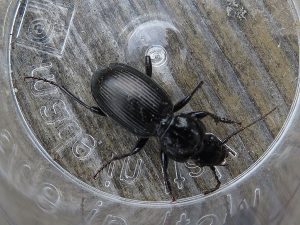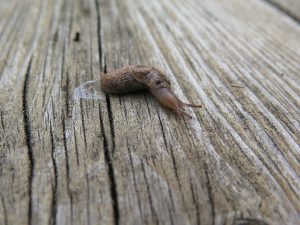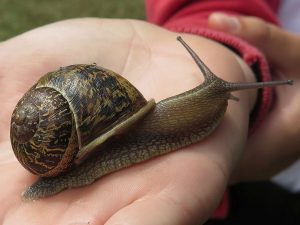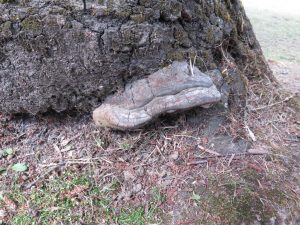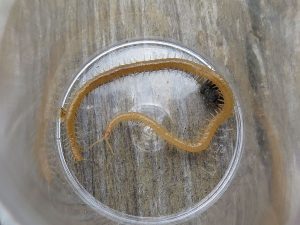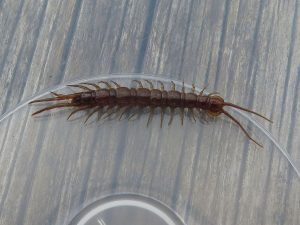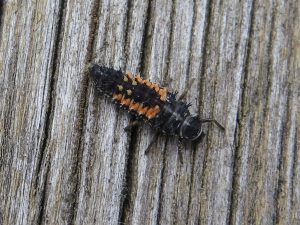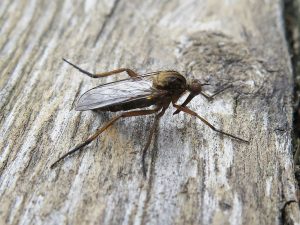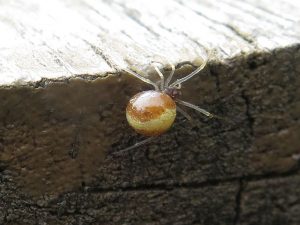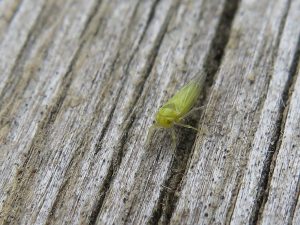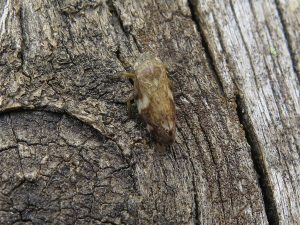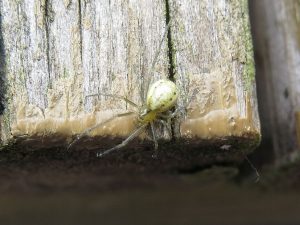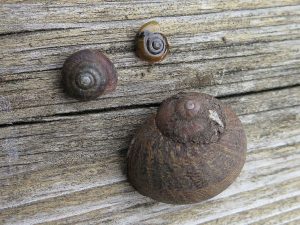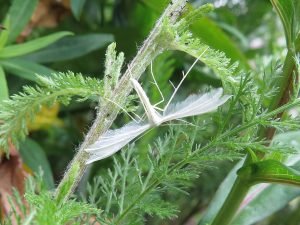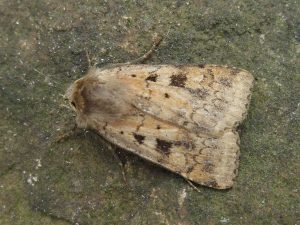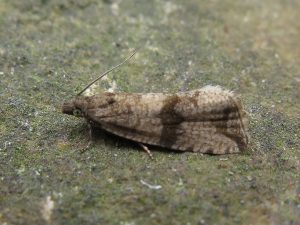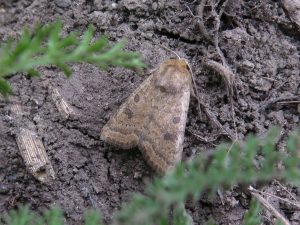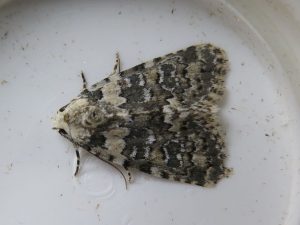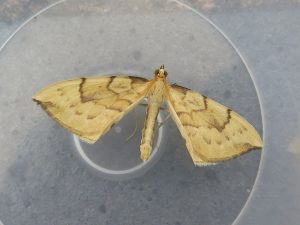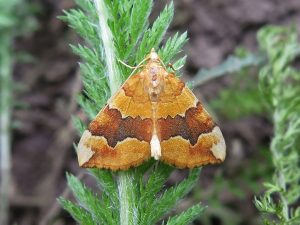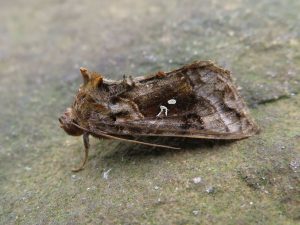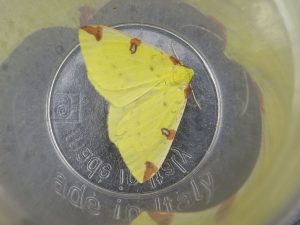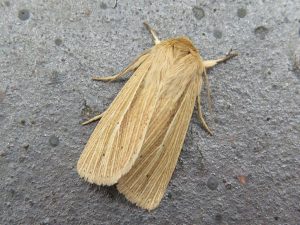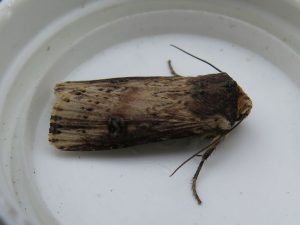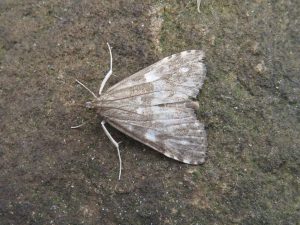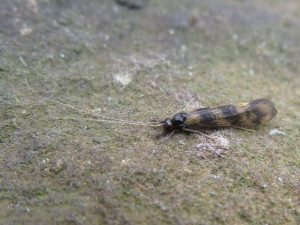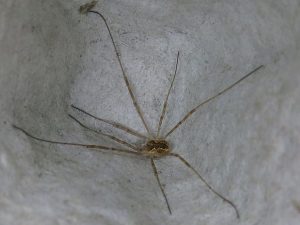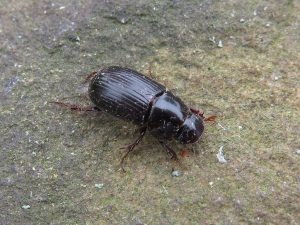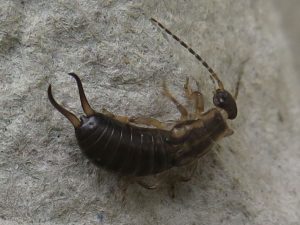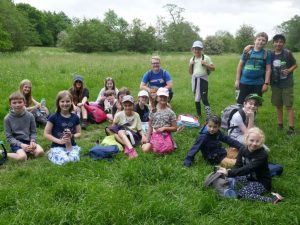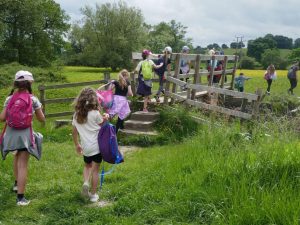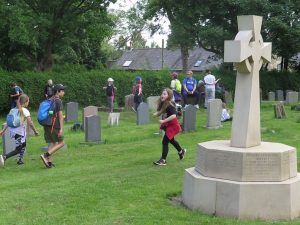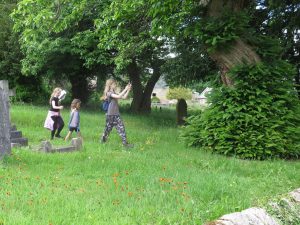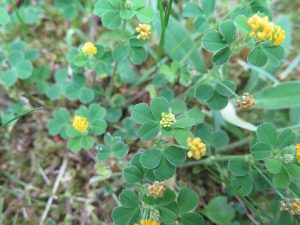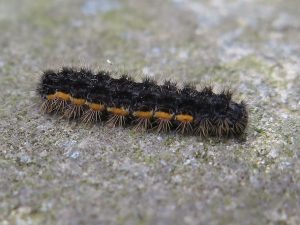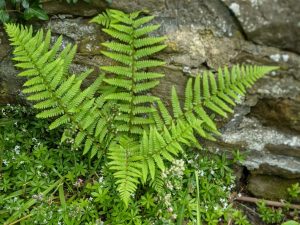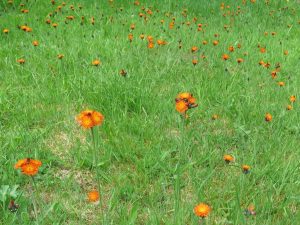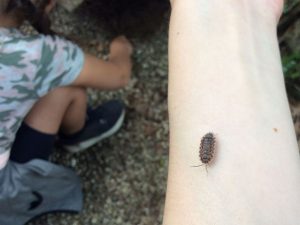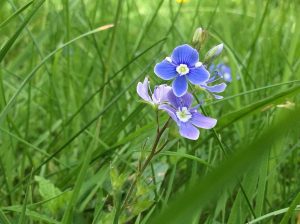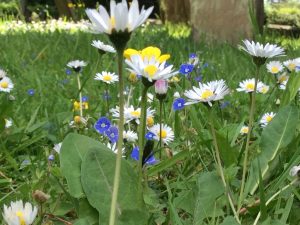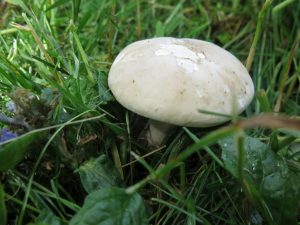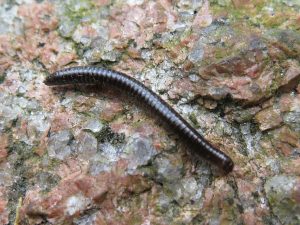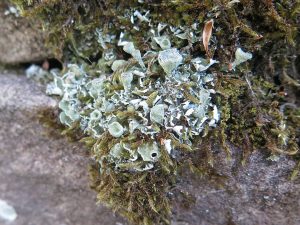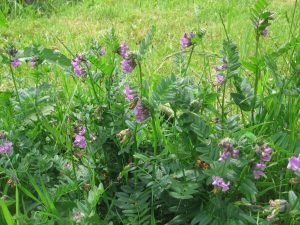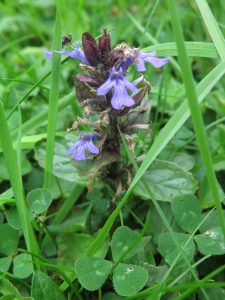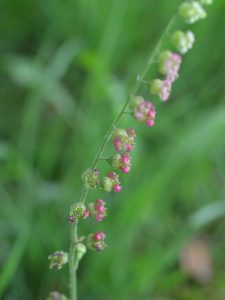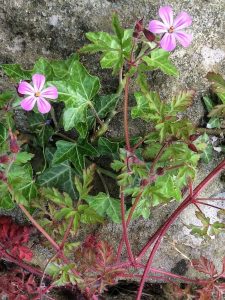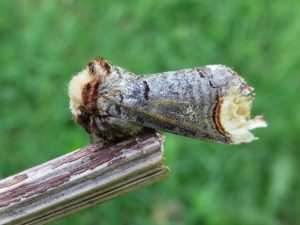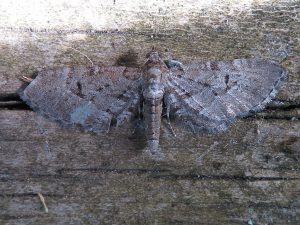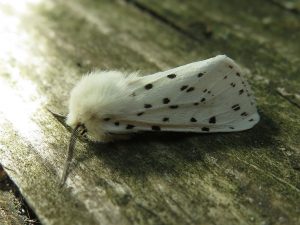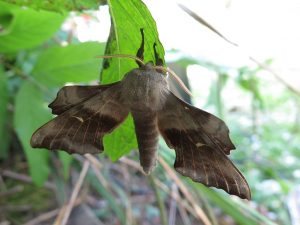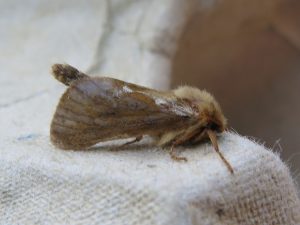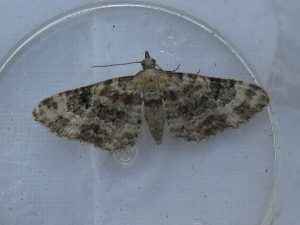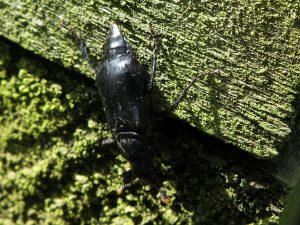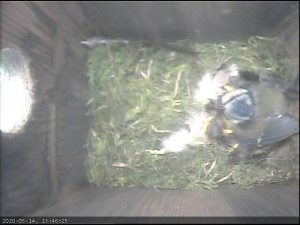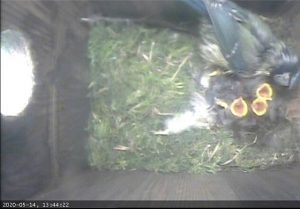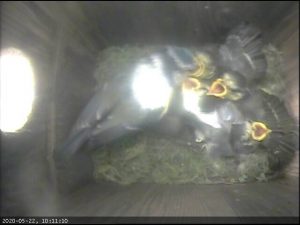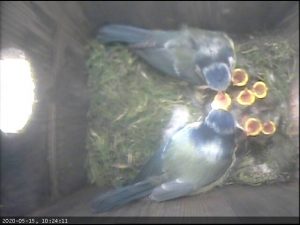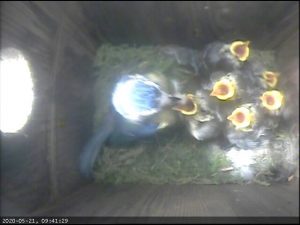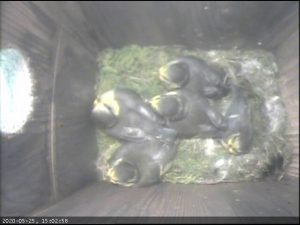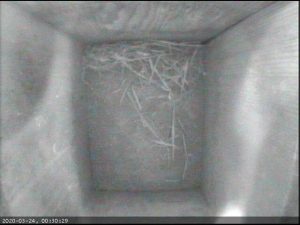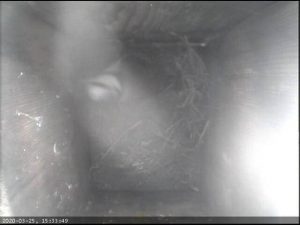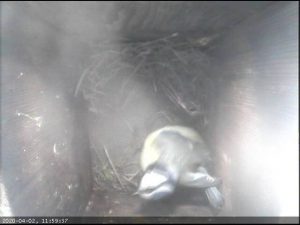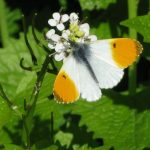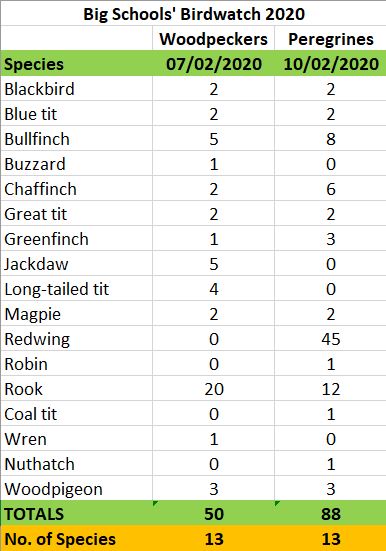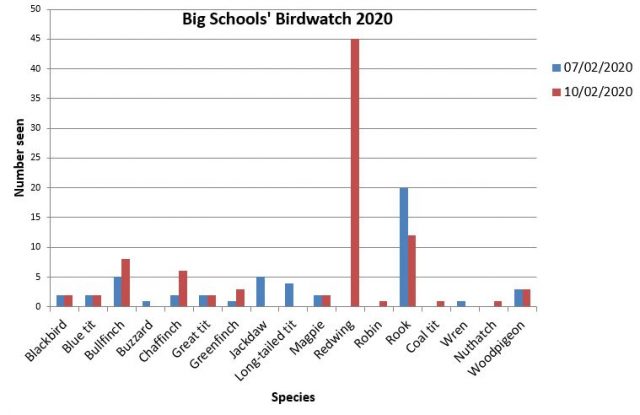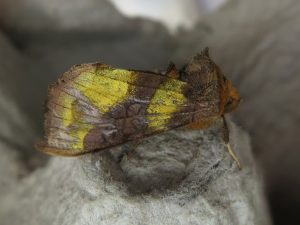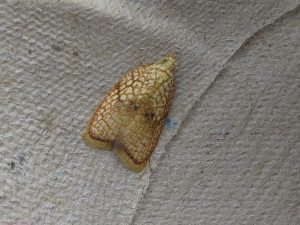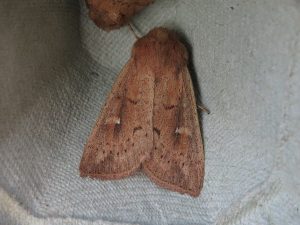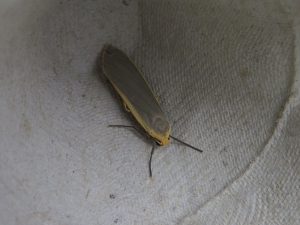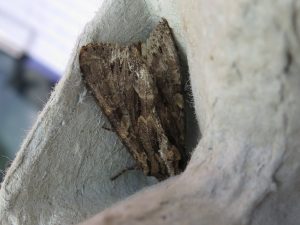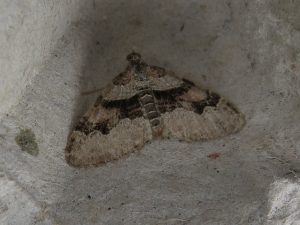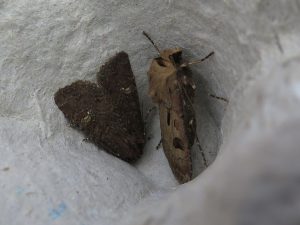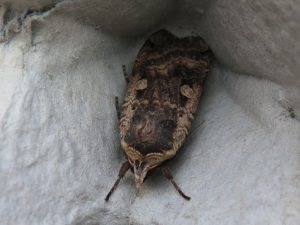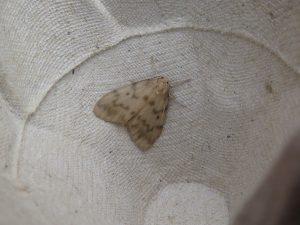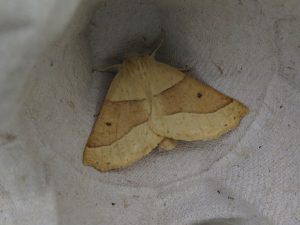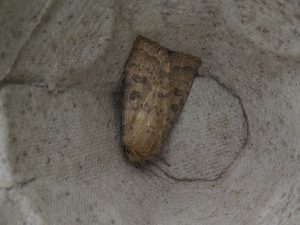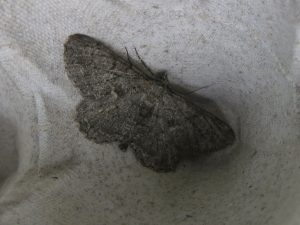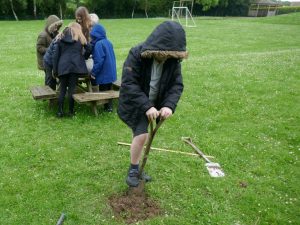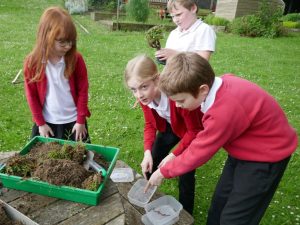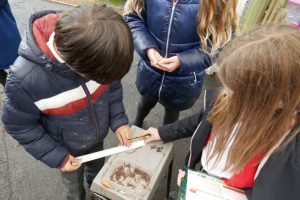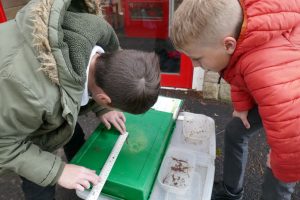We have two nest boxes fitted with cameras. Our original B&W birdcam box was set up outside the Infant classroom in March 2007; this was replaced by the new Colour Infant Birdcam box in 2014. Another Colour Birdcam box was installed round the back of the school, outside the kitchen, in 2008. Still images are uploaded to the birdcam pages around every 10 seconds.
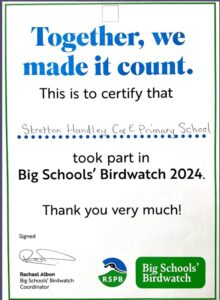 Kingfisher Class took part in this year’s Big Schools’ Birdwatch on Tuesday 13th February. We counted the number of birds seen for each species during a one hour period. We recorded 83 birds of 17 species. Nearly half of these birds were Rooks which were busy building nests in the tall trees.
Kingfisher Class took part in this year’s Big Schools’ Birdwatch on Tuesday 13th February. We counted the number of birds seen for each species during a one hour period. We recorded 83 birds of 17 species. Nearly half of these birds were Rooks which were busy building nests in the tall trees.
We saw the following species: Rook, Carrion Crow, Jackdaw, Blackbird, Magpie, Wood pigeon, House Sparrow, Dunnock, Song thrush, Bullfinch, Greenfinch, Goldfinch, Black-headed gull, Chaffinch, Great tit, Blue tit and Robin. We also spotted a Grey Heron flying over an adjacent field.
We put a moth trap out in the learning garden at the end of the school day on 12th June. The weather has been extremely hot for the last few days so we were hoping for a good catch. However, a burst of rain and some strong wind early in the evening meant that some were blown away from the trap. It was also difficult to count and photograph many of them in the morning as it was still warm, making them very active!
Children in Woodpecker class enjoyed letting them go!
- Small Magpie
- Poplar Hawk-moth
- Buff Ermine
- Heart and Dart
- Common Swift
- Olive Pearl
- Green Oak Tortrix
We recorded 19 different species of moth, 3 were new species for the school garden: Poplar Hawkmoth, Buff Ermine, Heart and Dart, Green Oak Tortrix, Common White Wave, Ingrailed Clay, Small Square-spot, Marbled Orchard Tortrix, Small Magpie, Willow Beauty, Common Swift, Straw Dot, Celypha lacunana, Olive Pearl, Common Pug, Mint moth, Dark Arches, Marbled Minor agg. Hook-tip Grass Veneer.
Kingfisher Class and Peregrine Class took part in the Big Schools’ Birdwatch on 7th February. This is an important annual national survey which helps keep track of changes of bird populations over time. We have been taking part in this survey since 2011!
During a one-hour period, they recorded the birds they saw in the school grounds. They counted the maximum number of birds, of each species, seen at any one time. We then submitted our results on the Big Schools’ Birdwatch website.
The moth trap was set up after school on 6th September near the bird hide and emptied the following morning by Kingfisher Class. Many moths will have escaped because of the warm temperatures and no attempt was made to count the moths! However, a great time was had trying to catch them, and the following were noted:
- Letting some go!
- Large Yellow Underwings liked us!
Gold-spot, Ash-bark Knot-horn (Euzophera pinguis), Centre-barred Sallow, Broad-bodied Yellow Underwing, Eudonia angustea, Dottled Clay, Large Yellow Underwing (majority of catch!), Canary-shouldered Thorn, Green Carpet, Dusky Thorn, Square-spot Rustic, Lunar Underwing, Setateous Hebrew Character, Lesser Yellow Underwing, Copper Underwing agg., Straw Dot, Blood-vein, Flounced Rustic, Brown-spot Pinion, Garden Carpet, Brown House Moth, Brimstone moth, Common Marbled Carpet, Common Rustic agg., Lesser Broad-bodied Yellow Underwing
Total of 25+ species including 6 new species (shown in bold).
- Gold Spot
- Canary-shouldered Thorn
- Dotted Clay
- Lunar Underwing
- Setaceous Hebrew Character
- Blood-vein
- Green Carpet
- Flounced Rustic, Brown-spot Pinion, Square-spot Rustic, Copper Underwing agg
- Brimstone and Garden Carpet
- Straw Dot
- Ash-bark Knot-horn
- a Shield-bug
- …and some beetles
During the course of the week commencing 28th June, Junior children carried out a bioblitz of the school grounds, recording as many plants and animals they could find. A full list can be found here – Bioblitz 2021.
Here are some of the things they found:
- Comfrey
- Nipplewort
- Black Medick
- Bramble
- Herb Robert
- Germander Speedwell
- Self Heal
- Moss
- Oak Sapling
- Ants nest in compost bin
- Spider
- Scarlet Pimpernel
- Common Liverwort
- Lichen
- Fungi
- Grass bug
- Woodlouse with eggs
- Common Rough Woodlouse
- Beetle
- Slug
- Garden Snail
- Horse’s Hoof Fungus
- Centipede
- Centipede
- Harlequin ladybird larva
- Dagger fly
- Bug
- Spidder
- Froghopper
- Spider
- Snails
The moth trap was set up near the Oak tree for the evening of 1st July. It was emptied the following morning by Junior children, making a good start to our invertebrate bioblitz day. 24 different species and a total of 52 moths were recorded. A further 3 species were found during the afternoon. 4 new species, for the school grounds, were recorded and are shown in bold below.
Marbled Beauty 1, Uncertain 11, Brimstone Moth 2, Olive Pearl 2, Barred Yellow 1, Celypha lacunana 2, Blastobasis lacticolla 1, Willow Beauty 1, Heart and Dart 3, Smoky Wainscot 1, Agapeta hamana 3, White Plume 1, Celypha striana 2, Common Footman 4, Bee moth 1, Plain Golden-y 1, Middle-bar Minor 2, Pale Mottled Willow 1, Ingrailed Clay 4, Chryoteuchia culmella 3, Flame 1, Large Yellow Underwing 1, Mottled Beauty 2, Barred Straw 1. Also a caddisfly – Mystacides longicornis, a harvestmen and a beetle.
Dayflying moths – Buff Ermine 1, Nettle tap 1, Eudonia lacustrata 1.
- White Plume
- Ingrailed Clay
- Barred Marble
- Uncertain
- Marbled Beauty
- Barred Straw
- Barred Yellow
- Plain Golden-y
- Brimstone Moth
- Smoky Wainscot
- Flame
- Olive Pearl
- a Caddisfly
- a Harvestman
- a Beetle
- an Earwig
Churchyard Wildlife Surveys
On Friday 11th June, children took part in “Churches Count on Nature”, a citizen-science event covering churchyards across England and Wales. People were invited to visit their local churchyard and make a note of the animals, birds, insects, plants or fungi they found there. The data will be collated on the National Biodiversity Network (NBN).
It is thought church land, often uniquely unploughed and undeveloped, could be a habitat for precious and endangered plants and other wildlife. It is even said that churchyards could form a new National Park.
Infant children walked down to Handley Church to do their survey. Meanwhile, Junior children walked nearly 3 miles, along the River Amber, to Brackenfield Holy Trinity Church to do theirs. Children noted down and took photos of as many species of fauna and flora they could find. We have submitted our records via iRecord which, when verified, will be added to the NBN Atlas.
A moth trap was set up in the school garden on the evening of June 14th and emptied by some of Kingfisher Class the following Morning.
We trapped 12 moths of 9 different species:
Foxglove pug 1, Common Swift 1, Buff Ermine 1, Poplar Hawk-moth 1, White Ermine 2, Heart and Dart 1, Buff-tip 1, Mottled pug 2, Beautiful Golden-y 1 and Freyer’s pug 1. The Foxglove pug was a new species for the school site.
We also trapped a Black Sexton beetle which was covered in mites. This beetle is a burying beetle, they bury the carcasses of small vertebrates such as birds and rodents as a food source for their larvae. When we let it go, it quickly buried itself into the ground.
- Moth trap
- Buff-tip
- Freyer’s pug
- Buff Ermine
- White Ermine
- Poplar Hawk-moth
- Common Swift
- Foxglove pug
- Black Sexton Beetle
Due to the last year’s Covid-19 lockdowns and upgrading our computers to Windows 10, we have been unable to monitor our bird box cameras online this year. We managed to hook up the cameras to an old data projector just before half-term. We were excited to find that the bird box above the kitchen had 4 Great tit chicks in it and they all successfully fledged on 26th May. A Blue tit was incubating eggs in the Infant box, which seem really late in the season, they still hadn’t hatched by the end of the term. On returning after the holiday, we found the nest had been abandoned.
The Blue tits in the colour birdcam box near the kitchen appear to have given up building their nest and the camera went offline on May 1st. However, today I spotted Blue tits making frequent visits to our other birdcam box outside the Infant classroom. I swapped the live feed over to the other box to find that we have chicks!
Click here for the live feed (a new snapshot is taken approximately every 10s).
I think I’ve counted 7 beaks, how many can you spot? How old do you think they are? (Have a look at pictures of previous broods to help you make your guess). How many times do they get fed over a 15 minute period?
- Brooding – 14th May
- Feeding – 14th May
- Ready for flight – May 2nd
- Both parents – 15th May
- Growing fast – May 21st
- Nearly time to leave – 25th May
Even though we can’t enjoy the school grounds at the moment, the birds are making the most of the peace and quiet! I’ve managed to get the Colour Birdcam back online and there appears to have been some activity. Fingers-crossed we get some nesting birds this year and the birdcam stays online!
- Colour Birdcam 24th March 2020
- Visiting Blue tit – 25th March
- Still visiting – 2nd April
Please leave a comment on this post if you spot anything.
Other great webcams to keep an eye on are the Nottingham Trent University Peregrine webcam and the Rutland Water Osprey webcams. Both currently have nesting birds to watch.
While we are all having to stay home, why not keep a nature diary to record what you see in your garden or out of the window. It could include what wildflowers are flowering, trees that are beginning to bud or come into leaf. What birds have you seen and if any of them are nesting in your garden? A useful website for identifying things you have seen is the NatureSpot website.
I’ve already seen the first butterflies of the year in my garden, Small Tortoiseshells, Brimstone and Peacock. These butterflies will be ones that are coming out of their winter hibernation, you may also see the lovely Comma butterfly. Usually the first species to emerge from a chrysalis (early April) is the Orange-tip butterfly, a real sign that Spring has arrived! If you want to find out more about butterflies, head over to the Butterfly Conservation website. You could also use their irecord app to record your sightings.
Let us know what you have seen by leaving a comment on this post. We would also love to see your photos. Will you be the first to see an Orange-tip butterfly this year!?
A moth trap was set up in the school garden on the evening of July 14th and emptied by Peregrine Class the following Morning. We trapped 50 moths of 20 different species. We identified the following 17 species: 10 Common Footman, 2 Willow Beauty, 2 Scalloped Oak, 10 Uncertain agg., 2 Riband Wave, 1 Acleris forsskaleana, 3 Muslin Footman, 1 Flame Carpet, 1 Burnished Brass, 4 Large Yellow Underwing, 7 Heart and Dart, 5 Common Rustic agg., 1 Dark Arches, 1 Mottled Rustic, 2 Smoky Wainscot, 1 Clay, 1 Olive Pearl.
- Burnished Brass
- Acleris forsskaleana
- Clay
- Common Footman
- Dark Arches
- Flame Carpet
- Heart and Dart/Common Rustic agg.
- Large Yellow Underwing
- Muslin Footman
- Scalloped Oak
- Uncertain/Rustic agg.
- Willow Beauty
This year BBC Springwatch teamed up with the British Trust for Ornithology and the Open University for their biggest citizen science project ever – Gardenwatch. The aim of this project is to map the resources available for wildlife in gardens up and down the country, and find out which wild visitors they attract.The project also wants to find out what our gardens are lacking and how we can improve them for nature.
So far, Peregrine Class (with help from Year 5) have completed 2 of the 4 missions, “Beyond the Backdoor” and “Worm Detective”. There’s still time to take part in Gardenwatch for your own gardens, results need to be submitted by the end of June. To find out more, visit the Gardenwatch webpage.
- Digging a 30x30cm square hole
- Sorting worms and other invertabrates
- Measuring and recording
- Measuring worm lengths
We recorded data for two patches and averaged our results which are shown below.

